Deconstructing the Boundaries Between Humans and Nature: In Conversation with Karoline Hjorth and Riitta Ikonen
1 11 Share TweetEyes as Big as Plates is the product of Karoline Hjorth and Riitta Ikonen 's twelve-year-long collaboration. The Scandinavian artist duo has travelled the world creating wearable sculptures from natural materials like pinecones, moss, limpets, clay and mushrooms. The project so far is made up of around 160 medium-format photographs of those who have donned the pair's creations, most of whom are elderly people. Over a decade down the line, Karoline and Riitta released a second volume of Eyes as Big as Plates as a photobook last year; check out their website to get your hands on a copy!
In this interview, we spoke with Karoline and Riitta about the genesis of Eyes as Big as Plates, the importance of recognising the universality of nature and the role we must play in protecting our environment, and the beautifully comedic encounters they have had over the years.
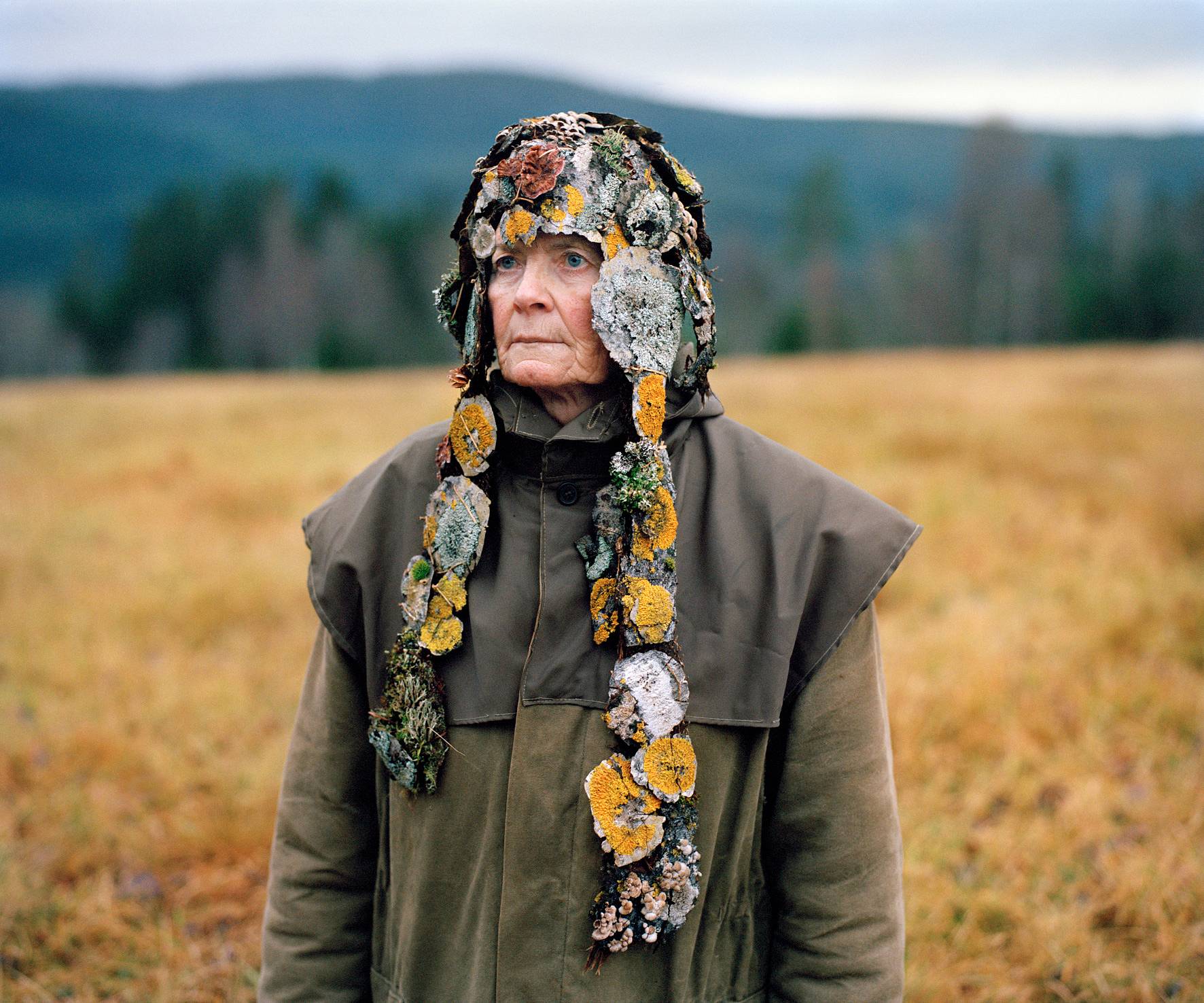
Hi Karoline, Riitta! Could you both start by telling us a bit about yourselves? Karoline, how did you get started with film photography? And Riitta, how did you get started with wearable sculpture, or costume design?
RI: Yes! So, I studied illustration. Before that [I had] this wild thought to do ceramics, and before that I was just making, making, making. So I think I actually should have gone for some kind of sculpture or printmaking course. Even when I went to do my MA, which was in Communication Art and Design, we were like this sweet batch of mismatching people who didn’t quite know what they wanted to do. So, yeah, I like the “making beyond boundaries”. That’s where I came from, making something wearable in order to express some issue in a photograph.
KH: Yes, I also come from quite a messy background of all kinds of subjects. I didn’t quite land in academia. I tried out some geography, some philosophy, some anthropology, but then somehow concluded that in social sciences everything needs to be very relative. And that made me think - maybe I should try something else! And then, without any background whatsoever, I tried photography in Middlesbrough in the north-east of England. I had a great teacher there [and learned that] you can use your camera to talk about interesting subjects.
I did an MA in journalism, not photography. But I ended up doing this final MA project that was more about art and photography than hardcore journalism. And that was one of the reasons why Riitta found me, because I was doing this project about what it means to be an old woman in Norway, in 2009. That project led Riitta to hit this Google search, when she was searching for a collaborator. And she put in these three words “Norway, grannies, photographer”. And I was the top search result!
We both lived in London and we didn’t know each other at all. And then I receive this email from Riitta just out of the blue, like “Hello! Would you like to collaborate with me in Norway on this project I’m doing?” And as soon as I saw Riitta's work and sense of humour, I immediately said yes, of course, here, I will give you my entire life!
It was a chance encounter, then, how you met. It reminds me of how you find your collaborators for Eyes as Big as Plates – total chance encounters. Do you think you could tell me a bit more about the context behind settling on the concept for that project? Did it go through multiple iterations, or was it quite immediate?
KH: I think we’re still searching for what we want to do.
RI: Exactly, yes. So we started with an idea we had written for an artist residency project. And then we [quickly] realised that we were [knocking on] something that wasn’t relevant at all, and the answer was basically no. I think the original questions, yes, were about folk tales and whether they held relevance, and if they mean something to the contemporary Norwegian person. And, stupidly, we thought that the older people in the community would be the ones who might be most in touch with this - maybe they would have more mystical explanations for natural phenomena.
We are also absolutely not folklorists, even today. People sometimes come to us about such-and-such creature and we’re like “hmm… I don’t know that one...” So it’s a little embarrassing, but yes, it did start there. And we continued! We just really loved working with these people who were really quick to say “I’m interested” or “I’m not interested” or “I’m busy”, “I’m not busy”, or “This moss was really nice, but now it’s too wet so I’m out of here, bye.”
We loved that kind of communication and directness and non-shyness, and that knowing what you want from life, as well as from a single photoshoot session or collaboration. So we just kind of stuck with older people from 2011 onwards for, what, eight years?
KH: I mean, they’re not excluded now either, but we’ve kind of shifted a little bit. The important thing is that they have some connection to the climate crisis, in some way.

So how did you make that shift to more of a connection to the climate crisis. What changed?
KH: It’s quite related of course. It didn’t change overnight; [it changed] as we also grew with the project. The conversations [we have] are shaped by the world and what is happening. And each conversation we had ended up turning into, “Ok, how bad is it over here? What changes are happening? Which species are not here anymore? No snow, more snow?” So every conversation was kind of centring around this. And of course we have this platform now, after all these years, that we can use beyond going on our adventures. And we thought, this is our chance to do something. People always ask, "What is it that you do? Is it land art, is it anthropology?" . . . What else have people said, Riitta?
RI: Is it landscape photography, costume design. . . We don’t really say costume, we say wearable sculpture but I know that sounds really pretentious. I remember at the beginning there was this thing that said, “Old people with sticks on their heads”, with something like five gazillion views on the internet, and people would ask “what do you do?” And I would just say, “Yeah, that thing.”
RI: When we talk to people about climate change, we always have a few set questions that stay the same, one of them is “Have you noticed changes in your environment?” In Korea, we were in the snowiest mountain village, really famous for extreme snow, and we were talking with all these older people, and they were like, “Yeah! We’re getting hardly any snow here, it’s amazing! We love it! Climate change is brilliant! I don’t have to climb out of my window to go outside!” And we’re like, “Ok, cool. I’m happy for you.” So yeah, [there are] so many angles to it.
KH: But that was the odd one out, I would say. That’s also a voice, but in most of the 160 works that we have now, it’s the opposite. People are affected in not so positive ways. I guess how conscious people are about it is very different, and how much they think it’s to do with us as a species is also very different from place to place.

Elderly people can often have much more cemented opinions, either for good or bad. You said that it’s nice to work with people like that, who just say yes or no. But how did you start approaching elderly people with the prospect of this kind of crazy thing? What was that process like?
KH: It was very natural. We’ve had two “no”s in the full project history. I mean, I think people just want to hang out and to be heard, maybe especially because we approach them as strangers.
RI: In the very early years, and this is one of the very first people we met - we didn’t even have a postcard to say, “Hi, would you like to come with us, we’re going to do something a little bit like this.” Now at least we can show a photo to [draw] you in. But there was this harbour, and this guy on a boat, and we kind of walked to the harbour and were like “Hi!” He was so so so cold to us, and we were sort of like, what’s the beef? We were being so friendly! Anyway, he did warm up slowly, and he said that he thought that we were Jehovah’s Witnesses when we first turned up, so he really didn’t want to talk with us! But then he saw Karoline’s nose piercing and he thought “Oh, ok.” Now I make a conscious decision not to dress in a suit when we go closer to people so we don’t mislead them. But people are pretty open!

There's a lot of humour in your photos, even though it’s also quite easy to label your project with some deep symbolism; someone even asked you in an interview if it was an allusion to the afterlife.
KH: I think, when we look at the images after, both of us need to feel that, “Ah, there’s some surrealism there,” otherwise it doesn’t work. It has to be there. And it’s very lucky that we share the same sense of humour! But I think it’s important for getting across what you want to say. If it’s very serious, then people just move on. I think humour is really a very powerful weapon.
Where does the intention lie? Do you approach the scene with a precise idea in mind, or does that part of it come afterwards, after you’ve done the photo, made the sculpture?
KH: Well, let’s say we have this stranger, and we want to know more. We start the conversation by finding out, “Who are you?” And from what this person says, and what we talk about, that’s how we [approach the], “Ok, what can we do together?” It’s a collaboration - we never call them models, so they are also creating with us. And they decide, “Oh, I feel strongly connected to this place,” because x and y. And after that we think about, “Well, this is the season for this kind of berry, or this leaf that I always use for my soup.” That’s where the sculpture, the location, the photograph and the text come from.
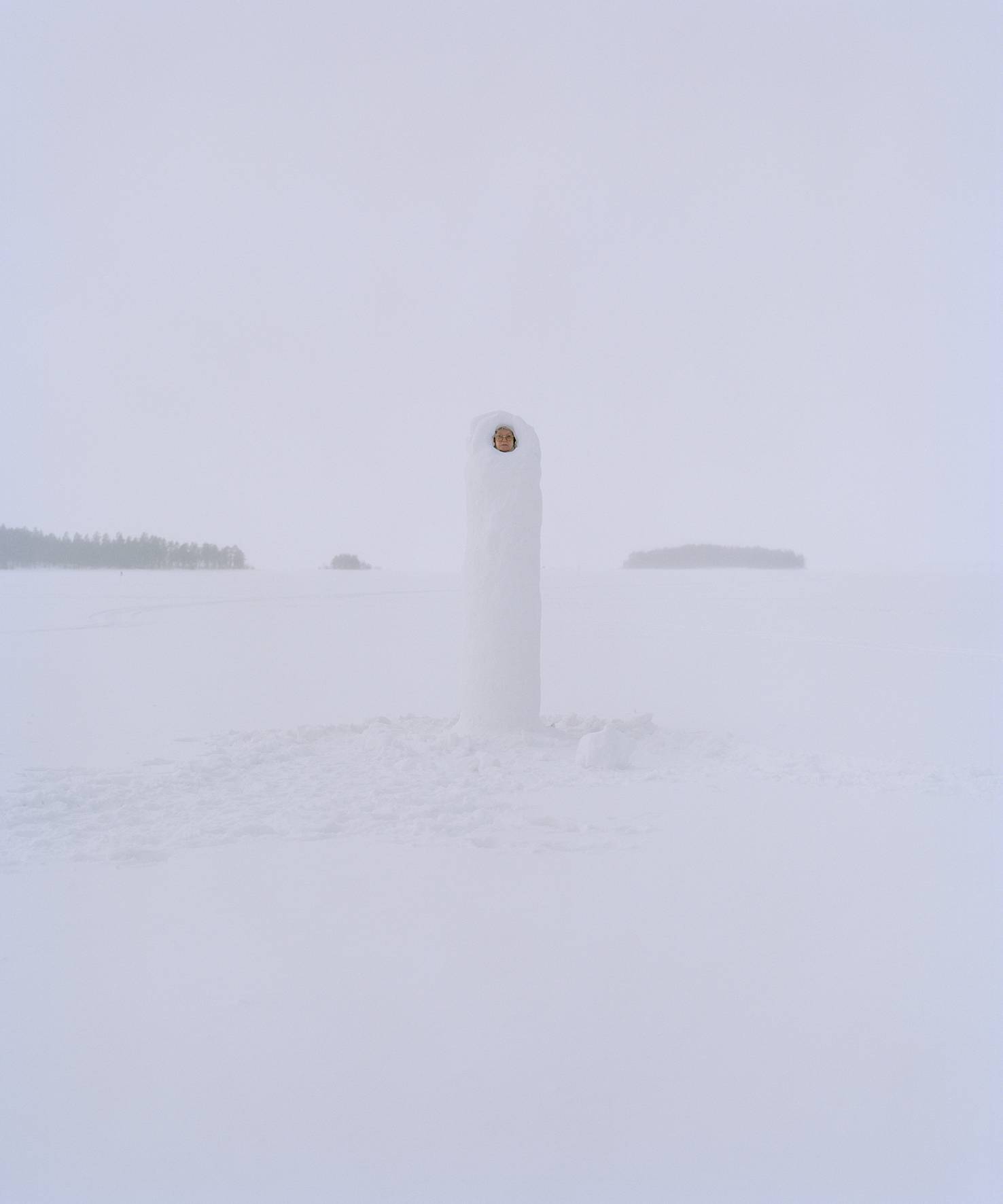
RI: So, let’s say we’re in a spot where we know we’re only going to be using these lingonberries, or our person is extremely tall, or unbelievably tiny - somehow, to be able to show that in relation to the landscape and to make whatever it is make sense, we know that this is going to be an extreme far away shot, or a medium close-up. Or there’s no way I can make a full body costume in twenty minutes out of these lingonberries, so it’s going to have to be a close-up, because I can only cover her head! And that will potentially also dictate how we actually frame it.
KH: We enjoy the serendipity thing. You don’t know what will happen. We don’t know if it’s going to be rainy, or windy, or snowy or not - so we just work with what is there, and that’s the “performance without an audience” sort of thing. And the bonus is the photograph at the end.
RI: There have been moments where we have lost most or all of the negatives. And that took a little moment to work through, but then we thought, we’ll always, always have the experience. And then to have the photographs to share is a bonus. So it really is a lot about us being able to go to these meetings and have the excuse to walk up to these strangers.
I think what you’ve described is that the whole project is built on chance and serendipity. The fact that you still choose to shoot analogue, which is also largely up to chance - you don't know exactly how it’s going to turn out - is super interesting! What’s the appeal for you?
KH: There are so many reasons, but I guess that maybe the best reason is what happens with our collaborators in front of the camera. We have a Mamiya 67, and because it is heavy, big, it’s not even meant to be outside, it’s a studio camera - it takes time to set it up, and the person in front of the camera just has to wait.
The actual shooting takes time, and that slows things down and it makes it a very different experience to having the digital camera out. It’s a totally different universe. And then [there is], of course the end result, which is also very different. I would say – grain versus pixels, you just can’t compare it. And also [in print], the tonal range, and colours, and texture.
RI: I really enjoy the wait. The patience element of it all. A few weeks after the frenzy is over, coming together and looking at the negatives together, going, “this one’s nice!”
KH: “Oh, this one is in focus, hooray!”
RI: Yes! Or, “this shoot was really sucky, and I thought that didn’t really work, but actually, look at that! I didn’t even see that that was there!” It’s like you can have a different experience at different times, of the same encounter. It’s richer on so many levels.
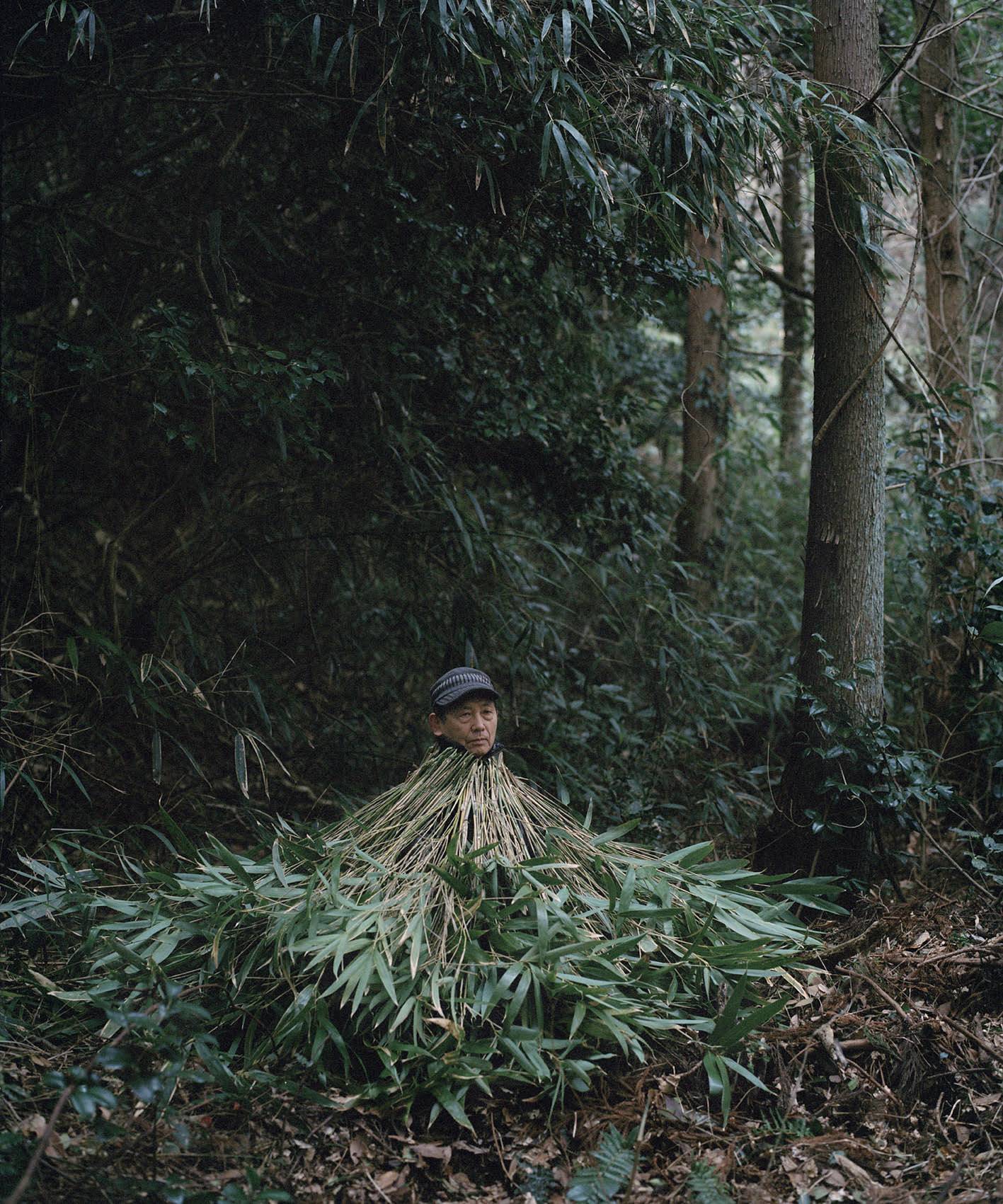
Do you have an ideal set-up? You mentioned the Mamiya, but is there a specific film that you use? Your images look very consistent visually.
KH: Thank you, that’s comforting to hear, we work hard! Yes, we are terrified that they will stop selling it, but it’s Kodak 160 and 400.
RI: They just doubled the price, but they’re still selling it. We used to buy the films here in New York and then bring them to Norway because it’s a little bit cheaper, but I don’t think that’s [true anymore].
KH: It’s really astronomical. So I guess it’s a good thing that we tend to use very few rolls in a shoot, like one to two rolls. Pretty crazy, some would say. But it seems to work!
An immediate reaction to your work is to feel that there’s something very ethereal and magical about those natural spaces, the woodlands especially. Have you ever had any strange "magical" experiences when you’ve been out on a shoot?
KH: I was thinking about Finnskogen, Riitta, do you remember?
RI: Oh, ooh, yes. But I think that was an actual bear or wolf.
KH: Yes, not anything imaginary. Finnskogen in Norway, it’s a large area where many Finns migrated to in the 1600s, bringing with them quite a different cultural history, with their slash and burn farming and shamanism. We were going to photograph somebody in this forest, and before we met, we had a chance to do some location scouting. Suddenly we heard this animal, this deep deep growl. Not far at all! Very close. But we couldn’t see anything, and it was very late autumn, so the theory is that it might have been a bear who had already gone into hibernation but had been woken or something.

RI: It was so close! And it was a big sound. So yeah, we ran. I don’t know what we were collecting, puffball mushrooms or something, but the mushrooms are still left in those woods.
But there have been other times, too, when I’m lying there behind some rock and the rain is falling on me and then. . . you hear stuff, or see stuff … You can really feel a lot when you are not doing anything in nature. I’ve said this before, too, that we really have [to start] the practice of going out and just being. Don’t go for a run, don’t go and pick mushrooms, but just be. And then see what happens.
I think there’s a real sense of that in your work, as well. I was considering whether nature feels more overwhelming or nurturing in your photographs, and I think it’s neither. It's like you're describing, just lying there and feeling so many things all around you. Do you have an opinion on that?
KH: I think maybe neither, as you said. If you don’t spend time anywhere [other] than in the city, then it might feel overwhelming. [But] so many humans live in less urban areas and that would be a very strange thing to say. I just thought about a Japanese guy [we met]. In the parking lot we asked him, “So, what’s nature? Where’s nature?” He said, “What do you mean? We are standing in it right now. I don’t understand the question”. And it’s like, yes, you’re right. Where is the division anyway? That’s a very human concept. The word nature is something we have started – not to dislike, but it’s not an easy thing to [define]. We kind of argue with ourselves and use it as a way to discuss, how do we define it? How does it look?
RI: It really would be helpful to just eliminate the word nature, because by definition it can separate us from nature; so that we have humans, and then we have nature. I think, hopefully, if anything, in the images you would learn [about] that boundary, maybe also national boundaries, or age boundaries, or gender boundaries. Hopefully you can’t always tell who, and when, and what. [It’s about] questioning this linear thinking, these preconceived ideas of, where am I and where does my tree start?
I grew up in London, and the first time my Swedish grandparents took me to the forest, I was terrified because the trees make this loud sound in the wind! Even though I’d been growing up underneath skyscrapers, which objectively look quite threatening, you can find the natural world just as threatening, which is really interesting. There is this lack of boundaries, especially for a child.
RI: It’s otherness, definitely! I mean, if you don’t know that sound of the wind going through the tops of tall trees – it is an intense sound.
KH: And if you don’t know about how it sounds and how it should sound, how it smells and how it feels - maybe you don’t even have a relationship with mountains, forests, lakes - it’s also very hard to care about it. It’s otherness, as Riitta just said. So maybe that’s part of our little agenda, trying to get people to go outdoors.

RI: Karoline, do you think it’s part of our agenda to make it look fun to go outside? Like, “Even your grandma is having more fun outside! Maybe you can also go…” I don’t know, maybe subconsciously we’re trying to suggest that you should have some FOMO.
To me there’s a real sense of time passing in your images. Like the people are spending more and more time in nature until they grow so close to it that they become part of it, or indistinguishable from it.
RI: That sounds great. Ideally, yes please!
Over the duration of doing the project together, how has your relationship with, or your perspective on, the natural world changed?
RI: I think even the concept of “what is nature?” - I’m not even embarrassed to admit I used to think there was this “other place” that was nature, that I would go to and consume. So I think really foundationally, just reconfiguring what I understand as my surroundings and where I am, and personally recognising that there is no separation. And that I don’t know who the protagonists are, but humans are not the protagonists in this story at all. I enjoy that. It’s one big merger.
KH: I guess, yes, we are not the protagonists, but we are the protagonists when it comes to destroying lots around us. I think before starting this project, it was more, you know, being outside was something to be enjoyed, and maybe [it was] more like, ok, we’ve learnt from each of our families how to pick berries, where to go skiing, where to find mushrooms. More recently we’ve started to learn more from the researchers, and people who work with rewilding projects and restoration of marshes, and bogs, and mires.
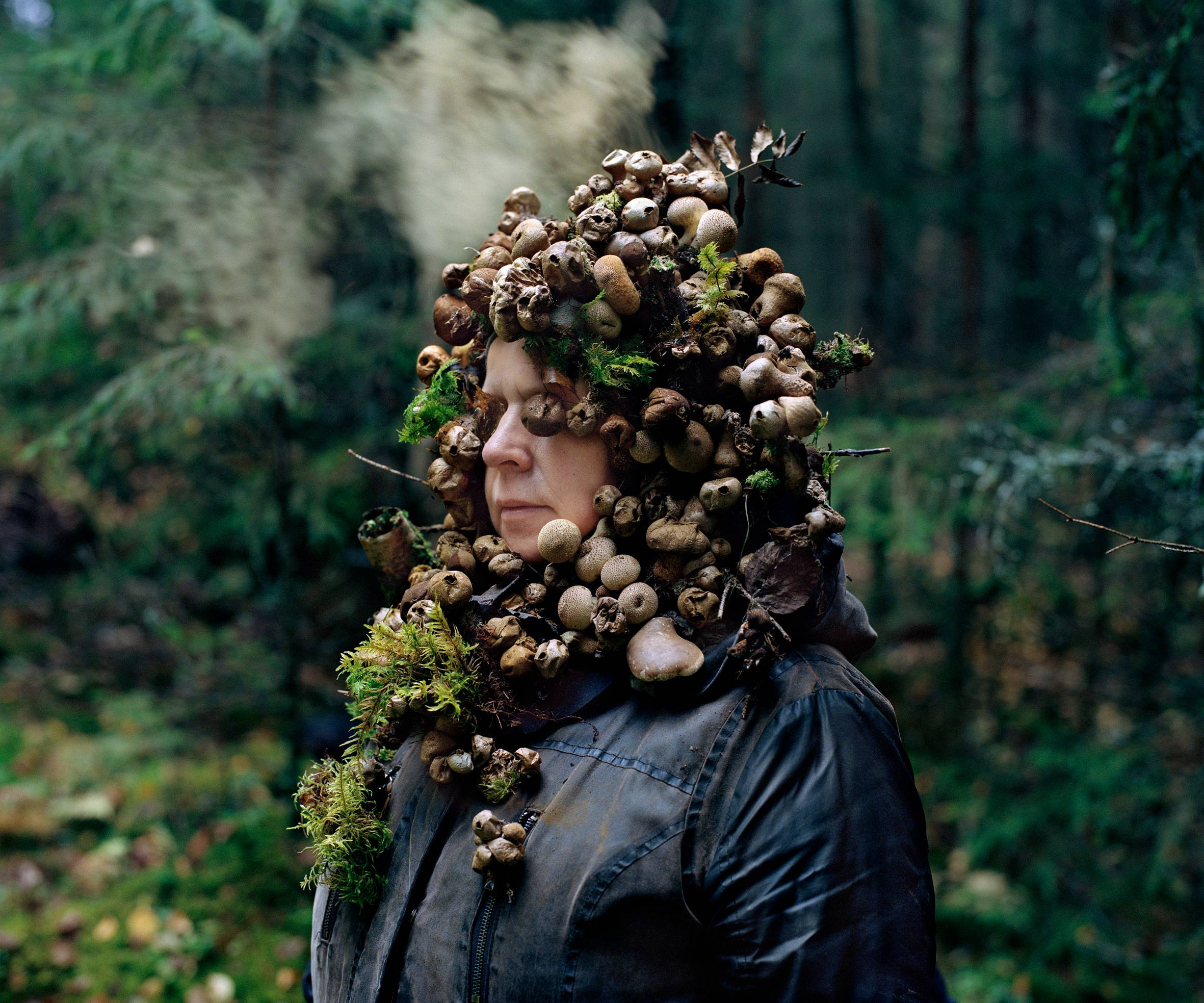
RI: Even last year, I realised that I can’t really distinguish the age of a forest when I’m walking through it. So it was really a lot of learning - like, “Ok, we need to find an old forest” - how can you tell? And I think there’s like seven different kinds of mires in eastern Finland. What are the different types? Where did they come from? How did it happen? And so on.
We are enjoying the fact that we are getting older, too. We started in 2011 and we can see [it] in the books and photos. You can [always] see yourself visibly getting older, and that’s cool, that’s fine. But I really enjoy the idea that we’re going to be going to a shoot one day with our Zimmer frames, or wheelchairs, or whatever [at] eighty, and maybe the person we’re photographing, we would have known them as a teenager. Like, “bring me my oxygen…” I really enjoy that image!
Riitta, you mentioned that you make the wearable sculptures on the spot, at the shoot. How do you go about constructing such a thing so spontaneously?
RI: Quite often it’s all of us. But I might turn up with a piece of wire, and we just collect materials. If it’s something like rocks or limpets or oysters or something solid like that, that doesn’t wilt, we can then make that the night before, or two nights before. But if it’s like nettles or some other wilting materials, or clay, then we really always do it on the spot.

KH: You’re being modest. Just the inventiveness mixed with DIY in the most expressive moment, and the tension with people looking - she’s just like, “Oh, I’m just going to make this incredible sculpture out of nothing but sticks, yes, yes. I will do that for you now, here you go!” And that is actually the reason that we can do these impulse ideas and have [this] creativity that just happens at the spot. That’s why we work together so well.
RI: We really like to work under pressure, that’s why our partners can never come and join the shoots. It would be instant divorce, I think.
What do you do with the sculptures after the shoot?
RI: It depends. Most often we just kind of disentangle whatever, and then take our wire home, recycle, pick the little barbecue sticks out of the moss, and then take those and just leave the moss there. So we try to leave no trace. There is one. . . the mushroom headdress is now at the Preus Museum in Norway, because it kept nicely, and we love mushrooms. And at a community sauna in New York we have the limpets. And pinecones in Finland.
KH: The pinecones will be shown at Guldenpris Kunsthall next year! It’s just. . . how to ship a man-sized cone suit weighing, I don’t know, fifteen kilos?

Do you have any collaborators that really stand out to you, in either a positive or negative way? Or one experience that’s really precious?
KH: That’s really difficult, it changes according to the day, who is most important or, “I miss this person the most now.”
RI: I have one person who is very special to me. We met in 2013 at the New York Indoor Gardening Society, and we saw his fabulous style and slipped a note in his pocket actually, because we had to leave. [It was] like, “We love your style, please call us,” and we left. Anyway, we are still friends, and this person is really - if I’m having a good day, or bad day, or a crappy time, or whatever, Bob is who I call. And he is always my rock, really. And he is the best penpal in the world. Just fabulous.
Big lifelong friendships I think have come from this. And then, some of the early ones too. We sometimes ask them for advice, when somebody is super impactful. But there’s also been some really nice, kind of challenging collaborators that I think in the moment, “This [person] is really hard to [get] along with,” but it still sticks in your mind. And I think a variety of opinions and perspectives is important. I don’t want to be surrounded by people who only think like me.
KH: Also, quite a few are no longer with us, and some of them left too soon. That also has an impact on what we remember from the meetings, what they have said, and their words and so on about the universe. Everything they’ve said has kind of a new meaning when they have left. It’s really quite special. I guess also the way that when you meet strangers, you have a different conversation than with someone you already know. It is a special kind of space for free talking. I mean, everybody knows that, ok, this is a project that might end up in a book - but there and then, we can talk about anything and everything, we’re just story sharers.
RI: And quite often, we can go pretty deep pretty fast. With someone you literally just met on the side of the road. And they can share their own life however much they want.
We'd like to thank Karoline and Riitta for sharing their work and insights with us! To view more of their work, check out the Eyes as Big as Plates website and Instagram!
written by emiliee on 2024-02-21 #people #in-depth #people #nature #medium-format #sculpture #norway #finland #elderly #scandinavia #eyes-as-big-as-plates #riitta-ikonen #karoline-hjorth #climate-crisis

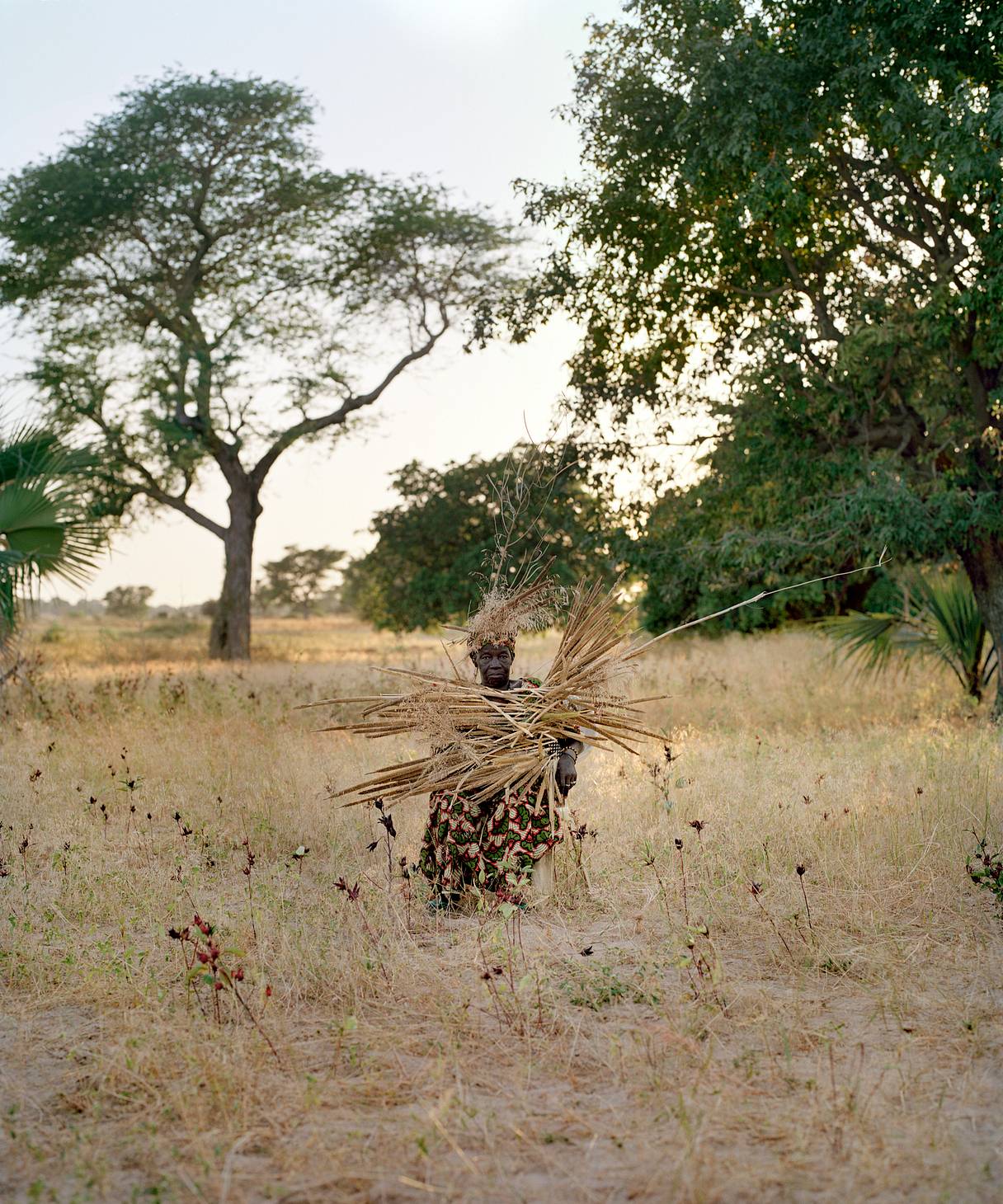


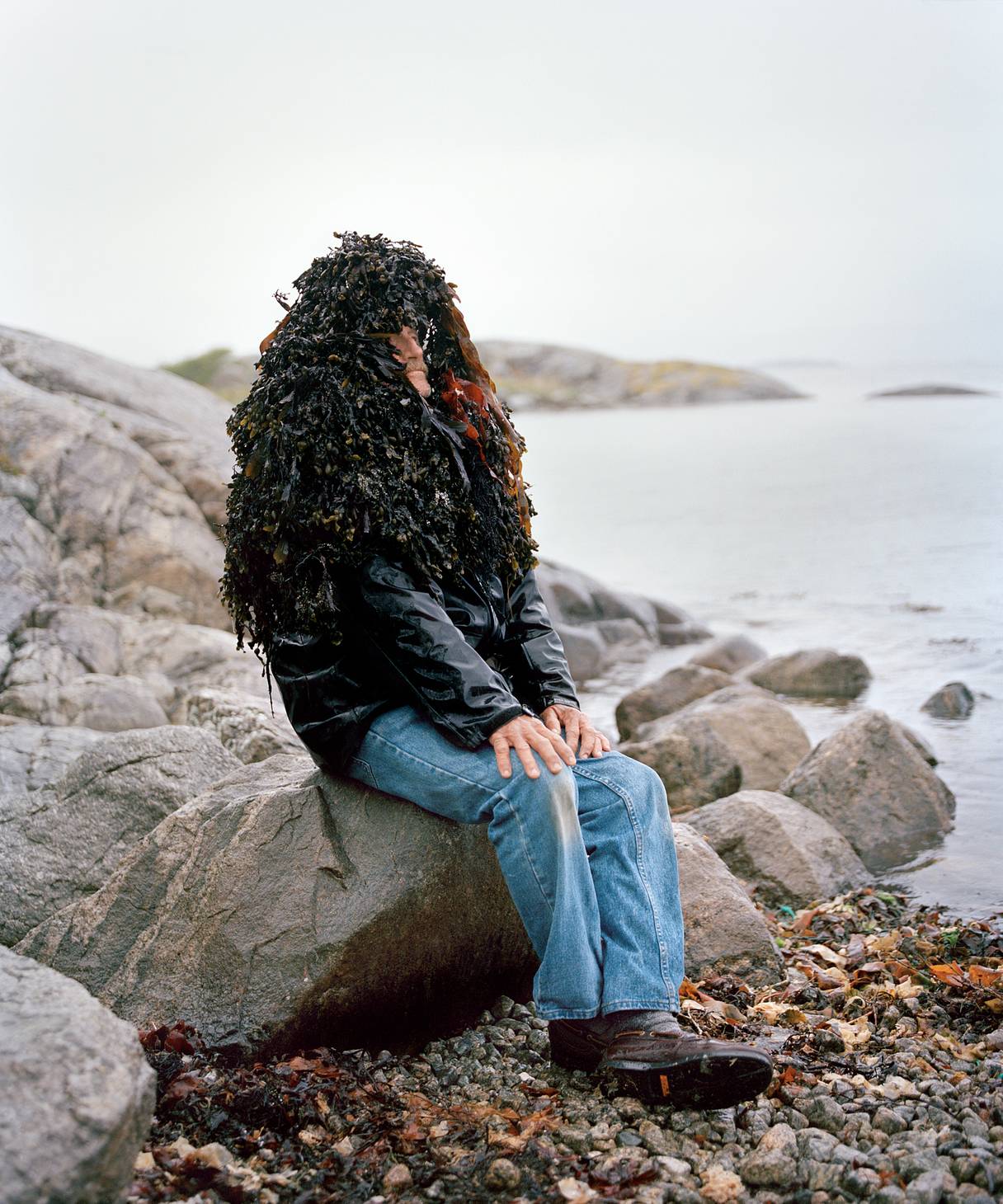
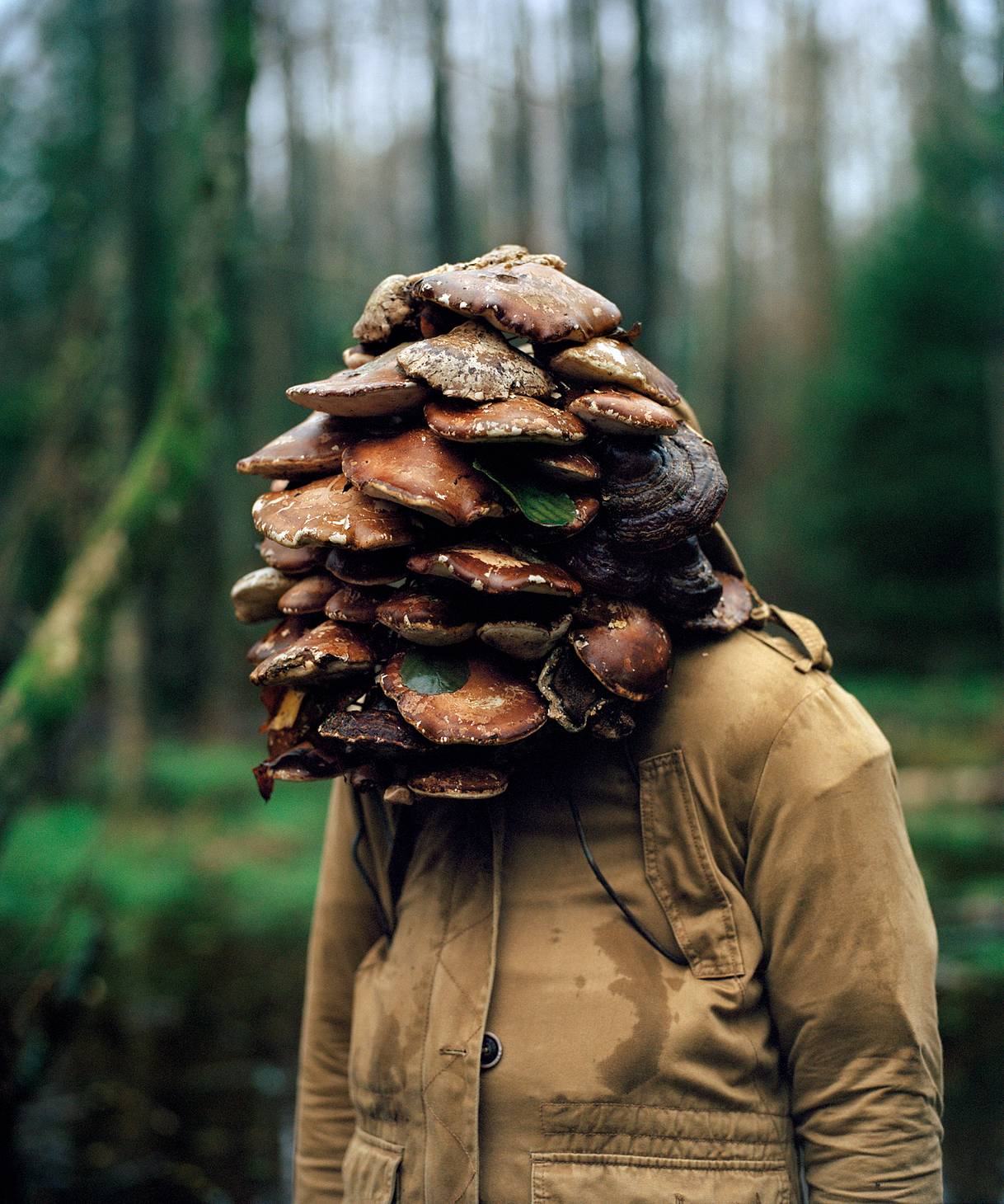
















One Comment